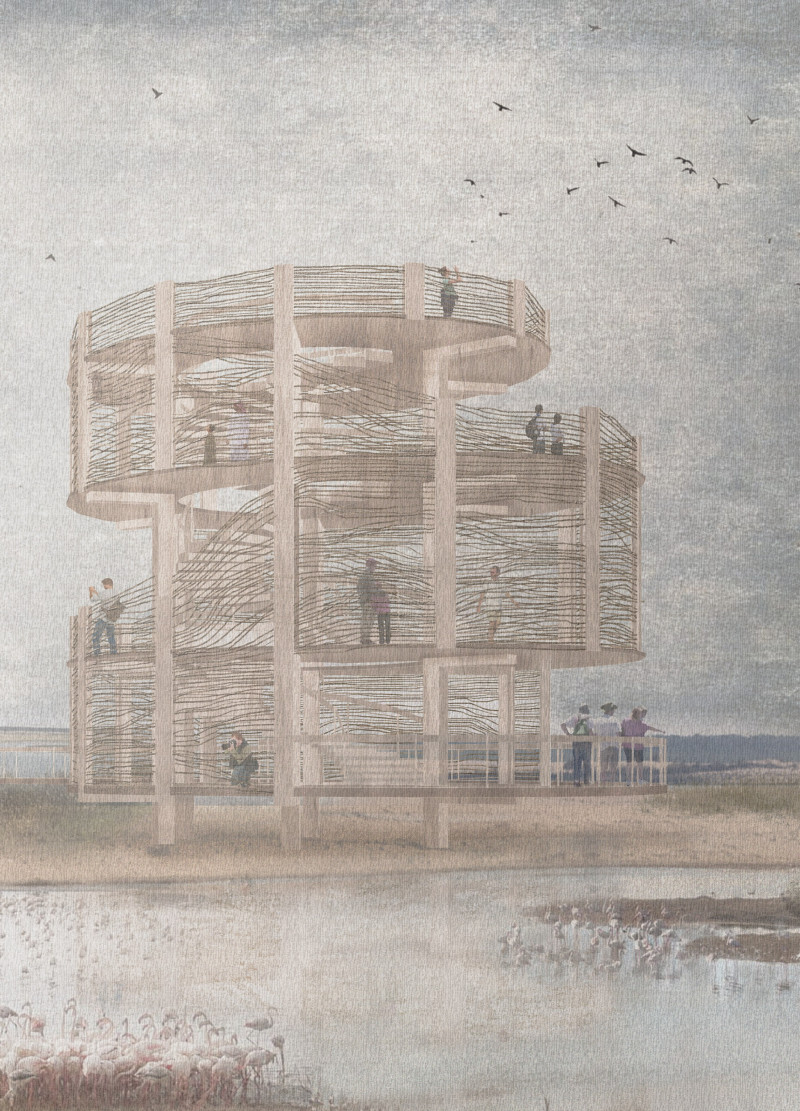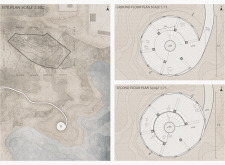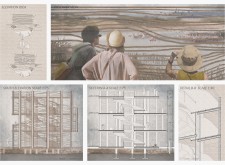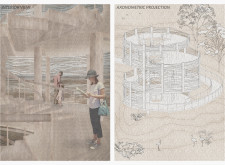5 key facts about this project
The Abu Dhabi Flamingo Observation Tower is located within a vibrant ecological reserve. It enhances visitor interaction with wildlife while respecting the surrounding natural environment. The design features an organic, oval shape that reflects elements found in nature. This fosters a sense of calm and promotes a deep connection between visitors and the landscape. As a viewing platform, it offers a unique opportunity to observe various species in their habitat.
Design Concept
The focus of the design is to create a respectful relationship between visitors and the environment. The oval form encourages movement and flow, while the horizontal lines in the structure reinforce ties to the natural landscape. This thoughtful design invites a closer engagement with the surrounding flora and fauna, encouraging visitors to immerse themselves in their surroundings.
Materiality
The building incorporates a wooden structural framework and horizontal rattan elements. The use of wood provides strength, while rattan serves as a flexible barrier between humans and wildlife. This choice of materials helps to maintain the ecological character of the site while ensuring safety and comfort for visitors. The rattan elements also allow for adaptability in how visitors interact with the observation tower.
Spatial Dynamics
Multiple levels in the tower create a sense of spaciousness and lightness. The thoughtful arrangement allows for terraces and shaded areas. This design promotes visitor comfort and encourages prolonged observation of the landscape. The circular layout offers panoramic views, ensuring that different perspectives invite exploration and appreciation of the rich biodiversity present in the reserve.
Natural Integration
The structure emphasizes the importance of integration with the surrounding ecosystem. By using natural forms and materials, the design reflects a commitment to ecological responsibility. This approach fosters a dialogue between the built environment and nature. Visitors can experience a smooth transition between the structure and the landscape. It highlights how architecture can coexist harmoniously with wildlife, enhancing the overall experience of the reserve.






















































